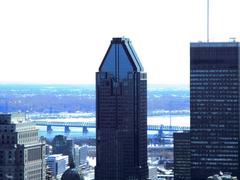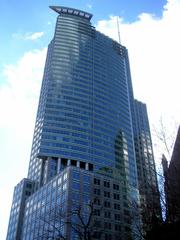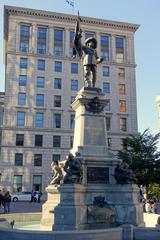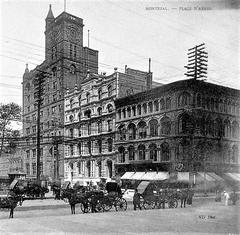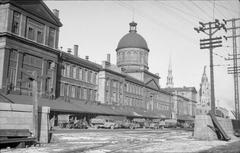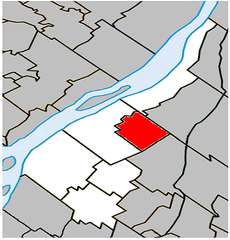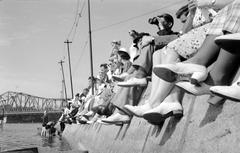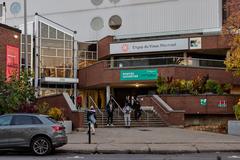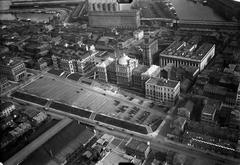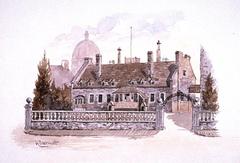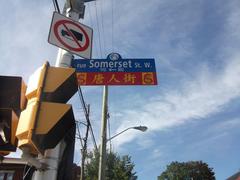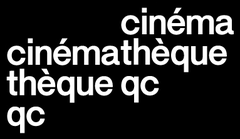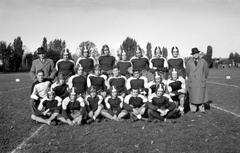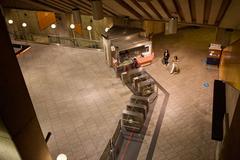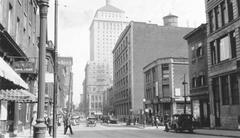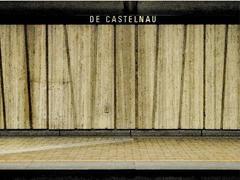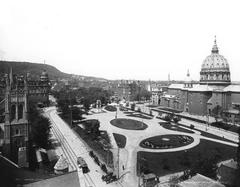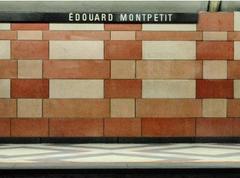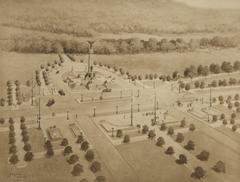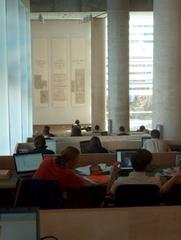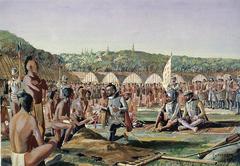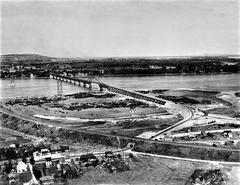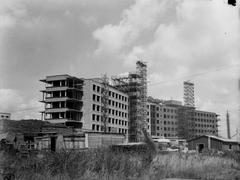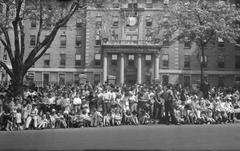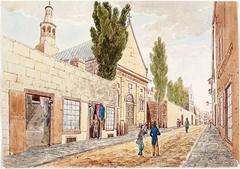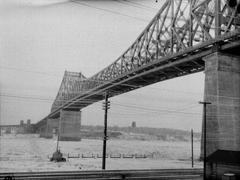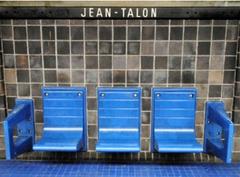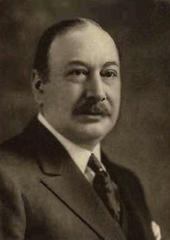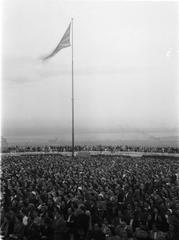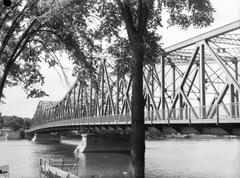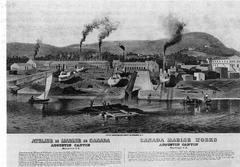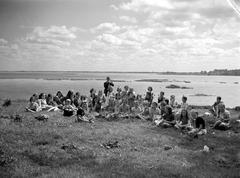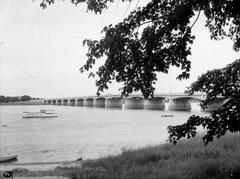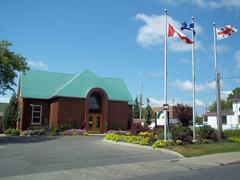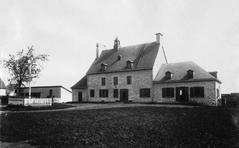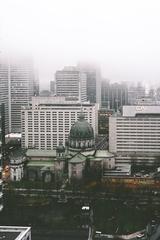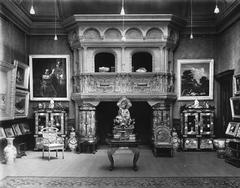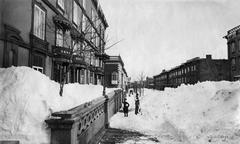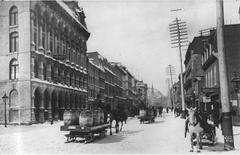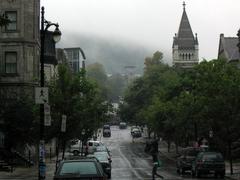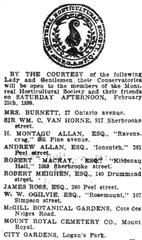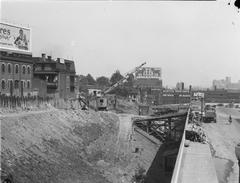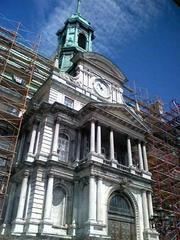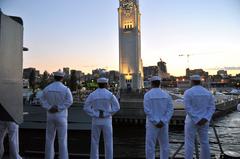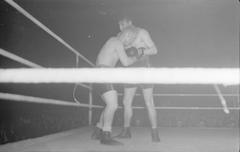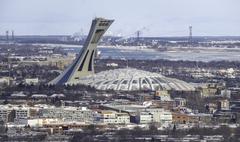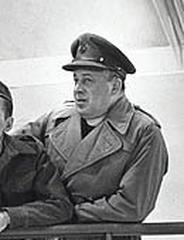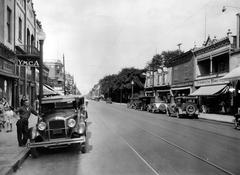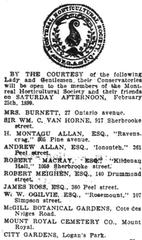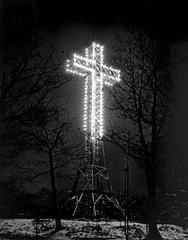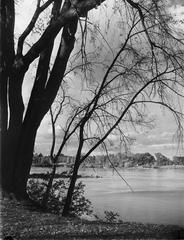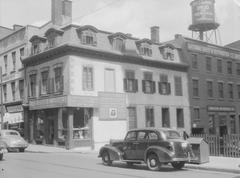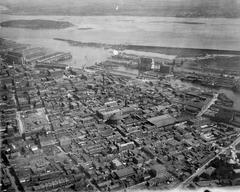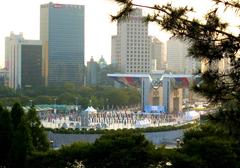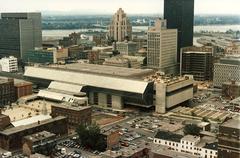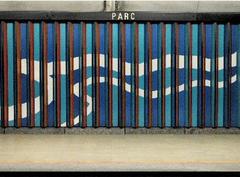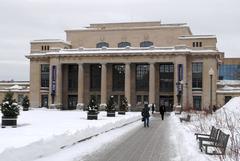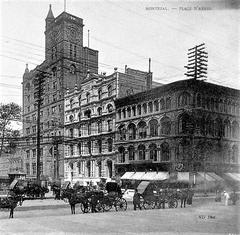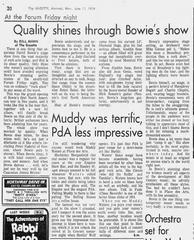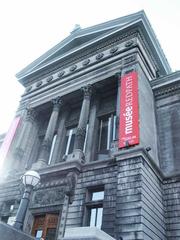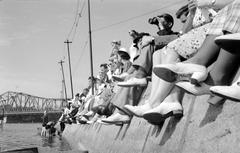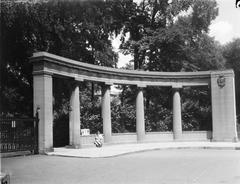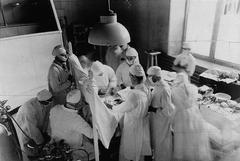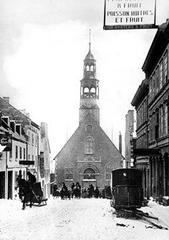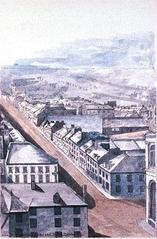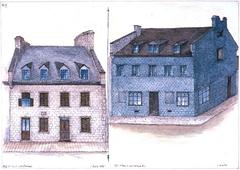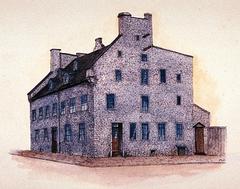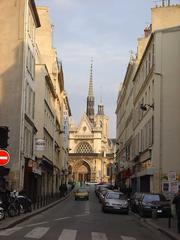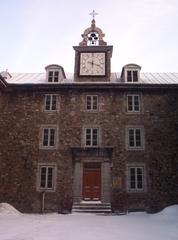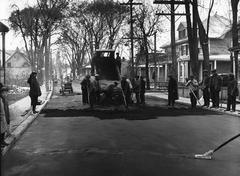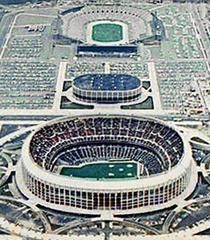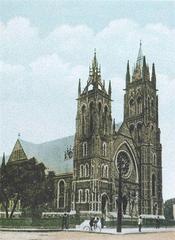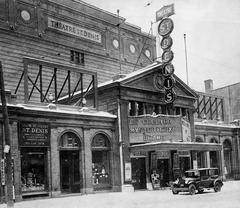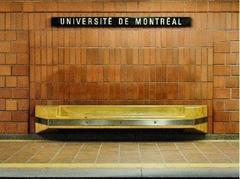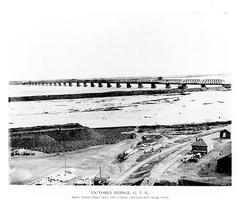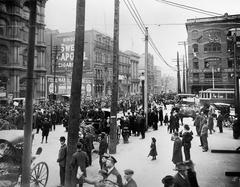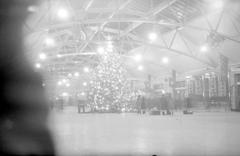Montreal Museum of Fine Arts Visitor Guide
Date: 17/07/2024
Introduction
The Montreal Museum of Fine Arts (MMFA) is a cultural landmark that holds a significant place in both the artistic and historical landscape of Montreal. Established in 1860, the MMFA has grown from a modest gallery into one of Canada’s foremost art institutions, renowned for its extensive and diverse collection. The museum features over 43,000 works, spanning various cultures, periods, and artistic movements, making it an essential destination for art lovers and cultural enthusiasts alike. From ancient Egyptian artifacts to contemporary Canadian masterpieces, the MMFA offers a comprehensive journey through art history.
The museum’s evolution is a testament to the power of community engagement and philanthropy. Key figures such as Judge Robert Mackay and Benaiah Gibb played pivotal roles in its early days, setting the foundation for what would become a world-class art institution. Today, the MMFA continues to honor its mission of making art accessible to all, offering a rich array of educational programs, workshops, and outreach initiatives. Whether you’re planning a visit or simply seeking to learn more about this iconic museum, this guide provides an in-depth look into its history, notable collections, and practical visitor information. (MMFA official site)
Table of Contents
- Introduction
- History and Development of the Montreal Museum of Fine Arts
- Exploring the Montreal Museum of Fine Arts
- Visitor Information
- Special Events and Tours
- Conclusion
- FAQ
History and Development of the Montreal Museum of Fine Arts
Early Beginnings (1860-1912)
The MMFA’s story began in 1860 with the vision of a group of art-loving Montrealers led by Judge Robert Mackay. Their goal was to establish a space where art could flourish and be accessible to all. This vision materialized with the founding of the Art Association of Montreal, the precursor to the MMFA.
The Association initially operated as a subscription-based art gallery, hosting exhibitions and offering art classes. In 1879, the Association received a significant boost when Benaiah Gibb, a prominent businessman, bequeathed his art collection and a generous sum of money upon his death. This bequest, along with other donations, allowed the Association to purchase its first permanent home on Phillips Square in 1879.
Expansion and Growth (1912-1976)
The early 20th century marked a period of significant expansion for the museum. In 1912, the Art Association of Montreal officially changed its name to the Montreal Museum of Fine Arts, reflecting its growing collection and ambitions. The museum moved to its current location on Sherbrooke Street in 1912, occupying the former mansion of Michael Baer, a prominent sugar merchant.
Over the following decades, the museum underwent several expansions to accommodate its ever-growing collection. Notable additions include:
- 1949: The Liliane and David M. Stewart Pavilion, dedicated to decorative arts.
- 1976: The Michal and Renata Hornstein Pavilion, housing their extensive collection of Old Masters and European art.
These expansions not only increased exhibition space but also allowed the museum to diversify its collection and programming, solidifying its reputation as a leading cultural institution in Canada.
Modernization and Transformation (1976-Present)
From the late 20th century onwards, the MMFA embarked on a period of modernization and transformation, aiming to enhance visitor experience and engage with contemporary art practices. Key developments during this period include:
- 1991: The opening of the Jean-Noël Desmarais Pavilion, dedicated to Canadian art and featuring a stunning glass-domed sculpture court.
- 2011: The inauguration of the Claire and Leo Vachon Pavilion, housing the museum’s international art collections and temporary exhibitions.
- 2016: The completion of a major renovation and expansion project, adding new galleries, an auditorium, and educational spaces. This project also saw the creation of the Michal and Renata Hornstein Pavilions for Peace, dedicated to exploring themes of peace and social justice through art.
A Legacy of Philanthropy and Community Engagement
Throughout its history, the MMFA has benefited immensely from the generosity of private collectors and philanthropists. Donations like those from Benaiah Gibb, Michal, and Renata Hornstein, and many others have shaped the museum’s collection and enabled its growth.
The MMFA is also deeply committed to community engagement, offering a wide range of educational programs, workshops, and outreach initiatives. The museum actively collaborates with local communities and organizations, making art accessible to diverse audiences and fostering a love for art among future generations.
Exploring the Montreal Museum of Fine Arts
Areas of Strength
The museum’s collection is particularly strong in several areas:
- Canadian Art: The MMFA boasts the foremost collection of Canadian art globally, encompassing works from the 17th century to the present. Visitors can explore the evolution of Canadian art through iconic pieces by renowned artists like Tom Thomson, Emily Carr, and the Group of Seven.
- Ancient Cultures: Journey back in time with the museum’s impressive collection of artifacts from ancient civilizations. From Egyptian sarcophagi and Roman mosaics to pre-Columbian ceramics and Mesoamerican sculptures, the collection offers a glimpse into the artistic achievements of bygone eras.
- European Art: The museum houses a significant collection of European art, with a focus on the 15th to 20th centuries. Highlights include paintings by Old Masters like Rembrandt and Canaletto, Impressionist and Post-Impressionist masterpieces by Renoir, Monet, and Van Gogh, and works by modern masters like Picasso and Matisse.
- Decorative Arts and Design: The MMFA’s holdings in decorative arts and design are equally impressive, featuring furniture, glassware, ceramics, and silverware from different periods and cultures. Of particular note is the Liliane and David M. Stewart Collection, showcasing Montreal’s decorative arts from the 17th to the 19th centuries.
Notable Artworks
Among the museum’s vast collection, several artworks stand out for their historical significance, artistic merit, and enduring appeal:
- “Woman in Red” by Henri Matisse (1939): This iconic painting, considered one of Matisse’s masterpieces, exemplifies his vibrant use of color and simplified forms. The painting’s subject, a woman seated in a patterned interior, exudes an air of quiet elegance and timeless beauty.
- “The Jack Pine” by Tom Thomson (1916-17): This iconic Canadian landscape painting captures the rugged beauty of the Canadian wilderness. Thomson’s bold brushstrokes and vibrant colors convey the raw power and majesty of nature, making it a defining work of Canadian art.
- “Self-Portrait” by Rembrandt van Rijn (c. 1629): This early self-portrait by the Dutch master offers a glimpse into the artist’s youthful ambition and technical prowess. Rembrandt’s masterful use of light and shadow creates a sense of depth and introspection, revealing the artist’s keen observation of human emotion.
- “Water Lilies” by Claude Monet (1906): One of a series of water lily paintings created by Monet in his later years, this work exemplifies the Impressionist fascination with light and its fleeting effects. The painting’s ethereal beauty and dreamlike quality transport viewers to Monet’s beloved garden at Giverny.
- “Egyptian Sarcophagus of Nakht-Min” (c. 1292-1279 BCE): This intricately decorated sarcophagus belonged to Nakht-Min, a scribe and official during the reign of Pharaoh Seti I. The sarcophagus’s vibrant paintings and hieroglyphic inscriptions offer insights into ancient Egyptian funerary beliefs and practices.
Visitor Information
Visiting Hours
The museum is open from Tuesday to Sunday, 10 AM to 5 PM, and on Wednesdays, it extends its hours until 9 PM. It is closed on Mondays.
Tickets
General admission tickets cost $24 for adults, $16 for seniors, $12 for students, and are free for children under 12. Special exhibitions may have additional costs. Tickets can be purchased online or at the museum. (MMFA tickets)
Accessibility
The MMFA is wheelchair accessible and offers services for visitors with visual and auditory impairments. Elevators, ramps, and accessible restrooms are available, and wheelchairs and strollers can be borrowed at the coat check.
Guided Tours
Enhance your visit with a guided tour. The museum offers various tours, including general collection tours, thematic tours, and private group tours. Check the official website for details and booking information.
Nearby Attractions
Located in the heart of Montreal, the museum is close to other historical sites and attractions such as Mount Royal Park, McGill University, and the historic Old Montreal district.
Special Events and Tours
The MMFA hosts a variety of special events, including art workshops, lectures, and film screenings. Guided tours are available daily, offering deeper insights into the museum’s collections and exhibitions. Don’t miss the unique photographic spots like the glass-domed sculpture court and the outdoor sculpture garden.
Conclusion
Today, the Montreal Museum of Fine Arts stands as a testament to the city’s enduring passion for art and culture. Its journey, marked by continuous growth, adaptation, and a commitment to its community, ensures its place as a vibrant cultural hub for generations to come. Plan your visit today and immerse yourself in the rich artistic heritage of Montreal. For more updates, follow the museum on social media or download their mobile app.
FAQ
Q: What are the opening hours of the Montreal Museum of Fine Arts?
A: The museum is open from Tuesday to Sunday, 10 AM to 5 PM, and on Wednesdays, it extends its hours until 9 PM. It is closed on Mondays.
Q: How much are tickets to the MMFA?
A: General admission tickets cost $24 for adults, $16 for seniors, $12 for students, and are free for children under 12. Special exhibitions may have additional costs.
Q: Is the MMFA accessible?
A: Yes, the MMFA is wheelchair accessible and offers services for visitors with visual and auditory impairments.
Q: Are guided tours available at the museum?
A: Yes, the museum offers various guided tours, including general collection tours, thematic tours, and private group tours.

